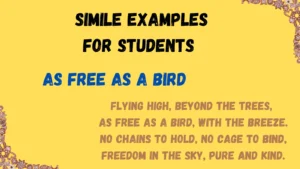The Art of Similes in Expressing Loneliness 🥀
Similes are like lanterns in the dark, using “like” or “as” to illuminate complex emotions with vivid comparisons. They transform abstract feelings into tangible images, making writing and speech more relatable and evocative. Instead of saying, “He felt lonely,” a simile like “He was lonely like a forgotten book on a dusty shelf” paints a vivid picture that resonates deeply. For loneliness—a universal yet deeply personal emotion—similes can capture its quiet ache, fleeting moments, or even its hidden beauty. Whether in poetry, journaling, or heartfelt conversations, these comparisons bring solitude to life. Have you ever felt loneliness that words struggled to describe? Let’s explore 25 similes for lonely, organized by theme, to give voice to this tender emotion. ✍️
Similes for Lonely: 25 Poignant Comparisons
These 25 similes, grouped into thematic categories, capture the many shades of loneliness—from quiet isolation to yearning for connection. Each includes a meaning, a contextual example, and a specific application for writing, speaking, or reflecting. Let’s dive into the heart of solitude.
Lonely as Quiet Isolation 🌑
Similes for moments of solitary stillness or detachment.
- Loneliness drifts like a cloud, casting shadows over the heart.
Meaning: Loneliness feels fleeting yet heavy, like a cloud blocking sunlight.
Example: In a poem, “Her loneliness drifted like a cloud, dimming the laughter around her.”
Application: Use in reflective poetry or a journal entry, e.g., “My loneliness drifted like a cloud during the silent commute.” - Loneliness is a deserted island, surrounded by endless waves.
Meaning: Loneliness feels isolated and unreachable, like an island far from others.
Example: In a short story, “He felt loneliness like a deserted island, cut off from the world’s warmth.”
Application: Perfect for introspective fiction or a blog post about feeling disconnected. - Loneliness lingers like a forgotten melody, soft but persistent.
Meaning: Loneliness haunts quietly, like a tune that echoes in the mind.
Example: In a diary entry, “Her loneliness lingered like a forgotten melody, humming through her quiet evenings.”
Application: Use in personal essays or a letter to express lingering emotions. - Loneliness sits like an empty chair, waiting in silence.
Meaning: Loneliness feels like an absence waiting to be filled, like an unused chair.
Example: In a family scene, “His loneliness sat like an empty chair at the dinner table.”
Application: Great for storytelling or a speech about missing loved ones. - Loneliness fades like a ghost, slipping through crowded rooms.
Meaning: Loneliness feels elusive yet present, like a ghost unnoticed by others.
Example: In a novel, “Her loneliness faded like a ghost, unseen in the bustling party.”
Application: Use in character-driven stories or a social media post about feeling alone in a crowd.
Lonely as Yearning for Connection 💔
Similes for loneliness tied to longing for others.
- Loneliness aches like a locked door, keeping love at bay.
Meaning: Loneliness feels like a barrier to connection, like a door that won’t open.
Example: In a love story, “His loneliness ached like a locked door, barring her from his heart.”
Application: Use in romantic poetry or a heartfelt letter, e.g., “My loneliness feels like a locked door without you.” - Loneliness stretches like a horizon, endless and unreachable.
Meaning: Loneliness feels vast and unattainable, like a distant horizon.
Example: In a reflective essay, “Her loneliness stretched like a horizon, separating her from others.”
Application: Perfect for personal essays or a speech about longing for connection. - Loneliness calls like a distant lighthouse, guiding no one home.
Meaning: Loneliness yearns for response, like a lighthouse signaling in vain.
Example: In a poem, “His loneliness called like a distant lighthouse, unseen by passing ships.”
Application: Use in introspective writing or a journal about unreciprocated feelings. - Loneliness burns like a candle, flickering for someone’s warmth.
Meaning: Loneliness glows with quiet hope, like a candle seeking company.
Example: In a memoir, “Her loneliness burned like a candle, waiting for a friend’s voice.”
Application: Great for nostalgic writing or a text to reconnect with someone. - Loneliness echoes like a canyon, amplifying silent cries.
Meaning: Loneliness magnifies inner longing, like a canyon echoes sound.
Example: In a story, “His loneliness echoed like a canyon, shouting for someone to hear.”
Application: Use in fiction or a speech about seeking belonging.
Lonely as a Fleeting Moment 🌬️
Similes for temporary or situational loneliness.
- Loneliness flutters like a leaf, falling in autumn’s chill.
Meaning: Loneliness feels fleeting and seasonal, like a leaf drifting down.
Example: In a journal, “Her loneliness fluttered like a leaf, passing as the party ended.”
Application: Use in reflective writing or a post about temporary solitude. - Loneliness drifts like a paper boat, floating on life’s stream.
Meaning: Loneliness feels light and transient, like a paper boat on water.
Example: In a coming-of-age story, “His loneliness drifted like a paper boat, sailing through the school year.”
Application: Perfect for young adult fiction or a caption about moving on. - Loneliness sparkles like frost, beautiful but cold.
Meaning: Loneliness has a fleeting, delicate beauty, like frost before it melts.
Example: In a winter poem, “Her loneliness sparkled like frost, shimmering in the quiet dawn.”
Application: Use in nature poetry or a journal about finding beauty in solitude. - Loneliness fades like a star, dimming at dawn.
Meaning: Loneliness softens as time passes, like a star fading in morning light.
Example: In a reflective scene, “His loneliness faded like a star, easing as friends arrived.”
Application: Great for hopeful stories or a tweet about overcoming solitude. - Loneliness dances like a shadow, trailing behind the light.
Meaning: Loneliness follows quietly, like a shadow tied to someone’s steps.
Example: In a character study, “Her loneliness danced like a shadow, clinging to her busy days.”
Application: Use in introspective fiction or a blog about balancing life.
Lonely as Inner Reflection 🪞
Similes for loneliness as a space for self-discovery or contemplation.
- Loneliness is a mirror, reflecting the soul’s quiet thoughts.
Meaning: Loneliness reveals inner truths, like a mirror shows a reflection.
Example: In a personal essay, “His loneliness was a mirror, showing dreams he’d forgotten.”
Application: Use in self-reflective writing or a speech about growth. - Loneliness whispers like a diary, holding secrets close.
Meaning: Loneliness feels intimate and private, like a diary’s pages.
Example: In a journal, “Her loneliness whispered like a diary, guarding her late-night thoughts.”
Application: Perfect for personal journals or a post about self-discovery. - Loneliness blooms like a cactus, thriving in solitude’s desert.
Meaning: Loneliness fosters resilience, like a cactus in harsh conditions.
Example: In a motivational story, “His loneliness bloomed like a cactus, strong in his quiet moments.”
Application: Use in inspirational writing or a speech about inner strength. - Loneliness is a canvas, painted with unspoken dreams.
Meaning: Loneliness becomes a space for creativity, like a blank canvas.
Example: In an artist’s story, “Her loneliness was a canvas, splashed with visions of poetry.”
Application: Great for creative writing or a caption about artistic solitude. - Loneliness weaves like a loom, threading thoughts into clarity.
Meaning: Loneliness shapes insights, like a loom creates fabric.
Example: In a reflective scene, “His loneliness wove like a loom, crafting wisdom from silence.”
Application: Use in philosophical essays or a journal about introspection.
Lonely with Cultural Echoes 🌍
Similes inspired by cultural or historical imagery of solitude.
- Loneliness stands like a lone pagoda, quiet amidst the storm.
Meaning: Loneliness feels steadfast yet solitary, like a pagoda in a tempest.
Example: In a historical novel, “Her loneliness stood like a lone pagoda, unshaken by the village’s bustle.”
Application: Use in cultural storytelling or a speech about resilience. - Loneliness hums like a sitar, plaintive yet soulful.
Meaning: Loneliness carries a haunting beauty, like a sitar’s mournful notes.
Example: In a cultural poem, “His loneliness hummed like a sitar, resonating in the quiet night.”
Application: Perfect for poetry or a blog about cultural heritage. - Loneliness is a caravan, wandering through memory’s desert.
Meaning: Loneliness feels like a solitary journey, like a caravan in vast sands.
Example: In a travel memoir, “Her loneliness was a caravan, trekking through memories of home.”
Application: Use in travel writing or a post about cultural displacement. - Loneliness glows like a lantern, softly lighting the heart’s corners.
Meaning: Loneliness illuminates inner depths, like a lantern in the dark.
Example: In a festival scene, “His loneliness glowed like a lantern, guiding his thoughts at Diwali.”
Application: Great for cultural essays or a caption about quiet celebrations. - Loneliness is a tapestry, woven with threads of silent stories.
Meaning: Loneliness crafts intricate narratives, like a tapestry of tales.
Example: In a heritage story, “Her loneliness was a tapestry, weaving her ancestors’ unspoken dreams.”
Application: Use in cultural fiction or a speech about legacy.
Creative Examples to Deepen Understanding 🖌️
These similes bring loneliness to life with vivid imagery. “Loneliness drifts like a cloud” captures the fleeting ache of a quiet moment, perfect for a poem about a rainy day. “Loneliness is a mirror” reflects the introspective side of solitude, ideal for a reflective essay. Ever felt your loneliness “hum like a sitar”? Try it in a journal entry about a quiet evening. Which simile echoes your own moments of solitude—does it ache like a locked door or bloom like a cactus?
Try This: Choose a simile and write a sentence about a lonely moment today, like “My loneliness sat like an empty chair at lunch.” Share it in a journal or with a trusted friend.
Practical Applications for Every Voice 📝
These similes can enrich your expression of loneliness:
- Poetry: Use “loneliness sparkles like frost” to craft vivid lines, e.g., in a winter poem about solitude.
- Stories: Add “loneliness is a deserted island” to a novel, showing a character’s isolation.
- Speeches: Say “Our loneliness, like candles, seeks connection” in a talk about community.
- Journaling: Write “My loneliness whispered like a diary” to reflect on a quiet day.
- Social Media: Post “Feeling like a paper boat, drifting through today 🌊” to share a moment.
Challenge: Rewrite a sentence about feeling alone with a simile, like “I felt alone” to “My loneliness echoed like a canyon.” Notice how it deepens your words!
Conclusion: Weave Solitude into Stories 🌟
Similes are your palette for painting loneliness with beauty and depth. From “ghosts” slipping through crowds to “tapestries” weaving silent tales, these comparisons make solitude speak. Why not try one today? Craft a simile for your own loneliness—maybe “loneliness is a quiet river, flowing through my thoughts.” Share it in a poem, post, or chat to connect with others. Loneliness is a universal thread; with similes, you can weave it into something unforgettable. Keep creating, and let your words shine! ✨



